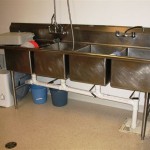Slate flooring is a popular choice for kitchens, as it is durable, stylish, and relatively easy to maintain. But before you decide to install slate flooring in your kitchen, it is important to understand the advantages and disadvantages of this type of flooring. In this article, we will discuss the pros and cons of slate flooring in the kitchen, so you can make an informed decision.
Advantages of Slate Flooring in the Kitchen
Slate flooring has a number of advantages that make it an ideal choice for the kitchen. Here are some of the benefits of installing slate flooring in your kitchen:
- Slate flooring is highly durable and resistant to scratches and stains.
- Slate flooring is easy to clean and maintain.
- Slate flooring adds a stylish and sophisticated look to any kitchen.
- Slate flooring is relatively inexpensive compared to other flooring options.
- Slate flooring is slip-resistant and provides a safe surface to walk on.
Disadvantages of Slate Flooring in the Kitchen
While slate flooring has many advantages, there are also some potential drawbacks to consider before installing it in your kitchen. Here are some of the potential downsides of slate flooring:
- Slate flooring is porous, which means it can be more prone to staining and discoloration.
- Slate flooring can be relatively difficult to install, requiring special tools and expertise.
- Slate flooring can be slippery when wet, so it is important to use caution when walking on it.
- Slate flooring is prone to chipping and cracking, so it needs to be handled with care.
- Slate flooring can be relatively expensive, depending on the type and quality of the material.
Overall, slate flooring can be a great choice for the kitchen, but it is important to consider the advantages and disadvantages before making a final decision. If you decide to install slate flooring in your kitchen, make sure to do your research and hire a professional to ensure the job is done right.















Related Posts








